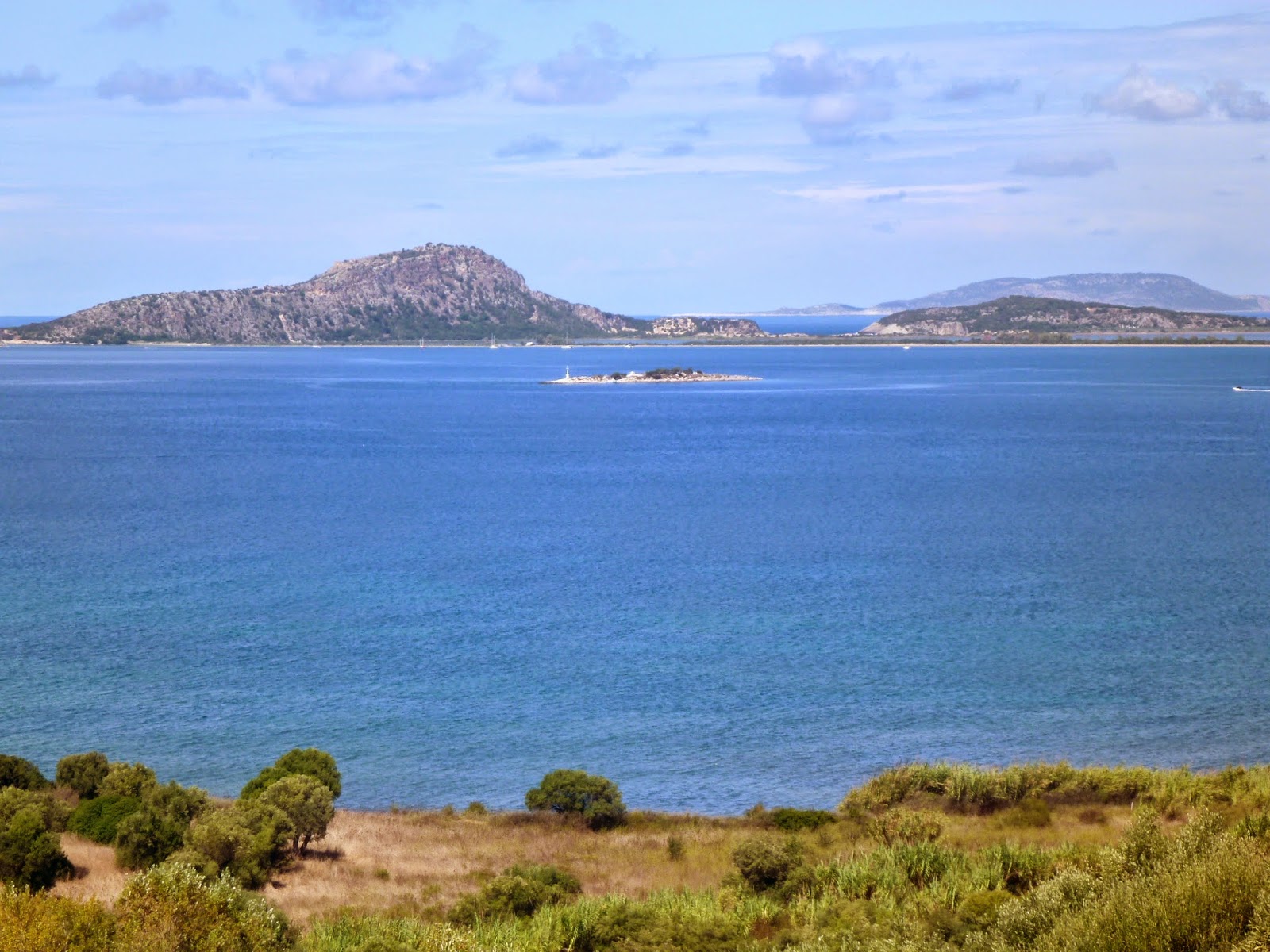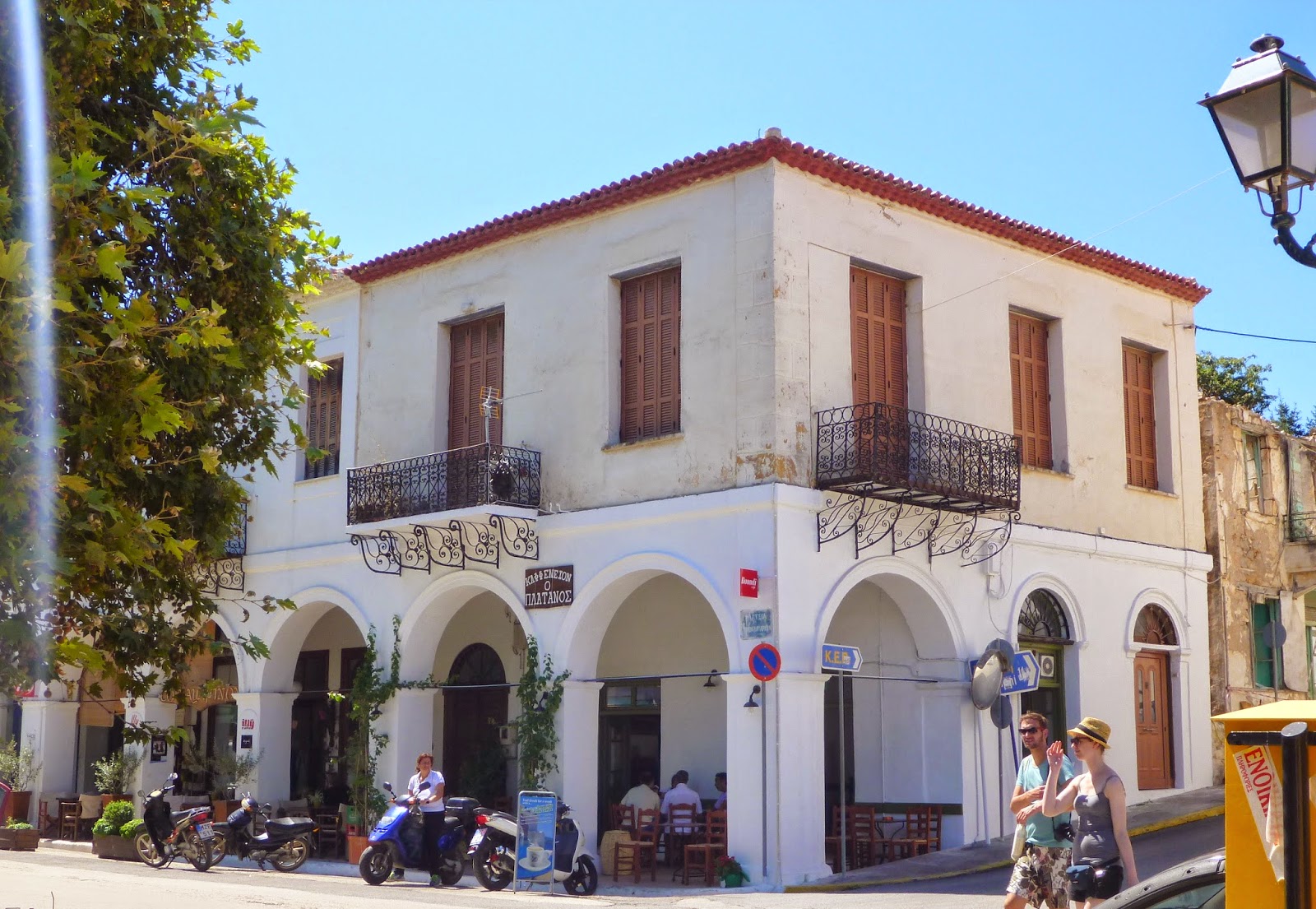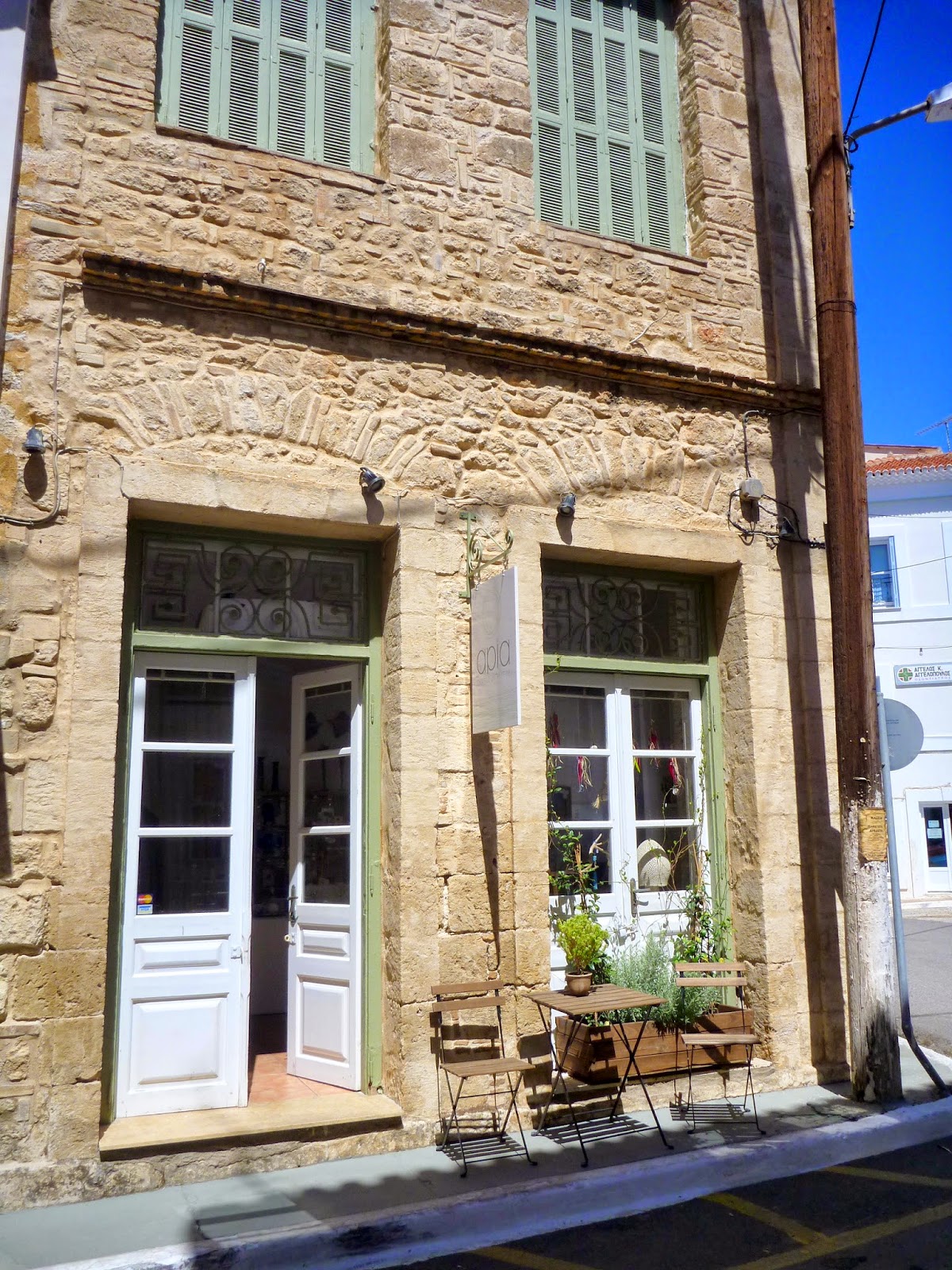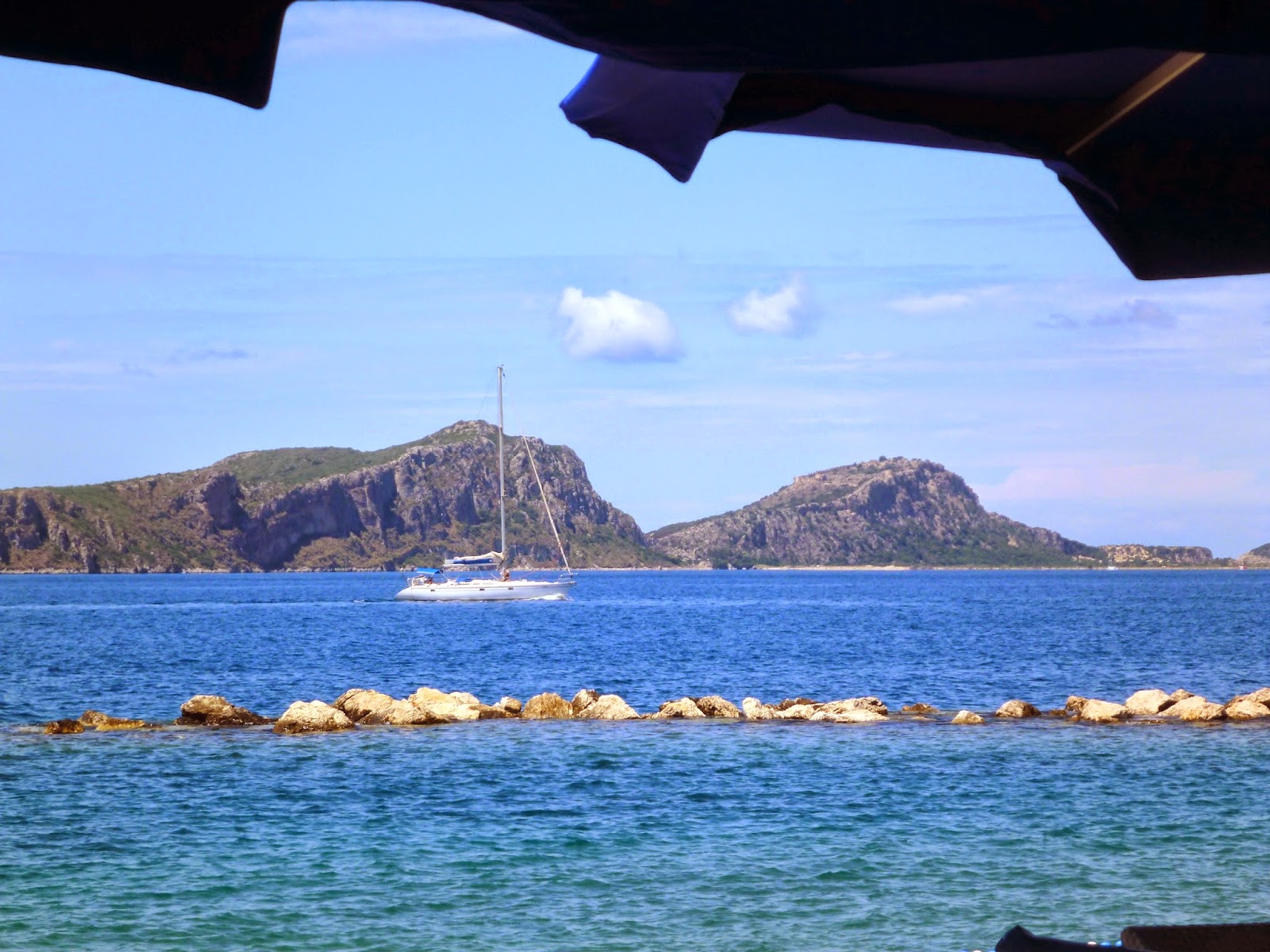Varied countryside as we drove from Kalamata to Pylos, mountain peaks
followed by elaiones, olive fields.
This is Kalamata olive country after all, and the elaiones followed one after the other in an endless procession
We stopped when we first caught sight of the bay of Pylos or the bay of Navarino, to call it by its proper name
The bay is formed by a deep indenture in the Morea, shut in by a long island, called Sphacteria or Sphagia in ancient times, Sfaktiria today, famous for the defeat and capture of the Spartans in the Battle of Pylos during the Peloponnesian War.
The bay of Navarino is where the naval Battle of Navarino was fought in 1827, during the Greek War of Independence. An Ottoman armada was destroyed by an Allied force of British, French and Russian vessels and ensured the independence that the Greeks had been fighting so hard for.
This island has been divided into three or four separate sections by the violence of the waves and this allowed boats to pass from the open sea into the port in calm weather, using the channels that were formed.
It was a stunning view
that took our breath away
This shrine was by the side of the road.
Ten minutes later we stopped again at the first sighting of the town itself and its little harbour
Pylos was inhabited in Neolithic times and was a significant kingdom in Mycenean Greece. The remains of the so-called Palace of Nestor were excavated nearby, named after Nestor, the king of Pylos in Homer's Iliad.
a closer look of the town: red roofs, white houses
The first thing we did once we arrived was to visit the remains of the castle

the castle wall
The whole area around the castle is full of eucalyptus trees with their characteristic peeling trunks
and affords great views of the Navarino bay
as well as the town itself.
We then walked down the path to the town - some buildings were in need of restoration
while some had been restored beautifully.
The sea front is lined with palm trees
while a lot of the houses have these arched passageways that afford welcome shade from the unforgiving sun
the square was buzzing with life
one more view of the square
most of the houses around the square had these arches
and were lined with shops
these balconies are so small
and most streets around the square had steps leading up the hill
luscious produce
cranberry beans
summer fruits
more steps
I don't remember what this shop was called, but they had a nice collection of studio ceramics
We then reached the little harbour we had seen from the top of the mountain
nice view of the town from that spot
and then back to the busiest part of the sea front which is lined with the palm trees seen earlier
The Town Hall
a closer look at the monument of the Unknown Soldier
We had a drink in one of the cafeterias and had the opportunity to enjoy the view
On the way out of the town we came upon this dilapidated building. The red sign says: 'Beware, this building is about to collapse'.
Once we reached one of the mountain peaks we had to stop again as the view of the bay was breath taking
Silver and black under the midday sun
looking closer.












































Lovely place - is the castle a Venetian one?
ReplyDeleteIt's an Ottoman castle, Olga. Apparently the Venetians made some modifications but then it was retaken by the Ottomans.
DeleteThank you, Eirene. I find the Venetian architecture around Greece very attractive. I am not familiar with the Ottoman castles - I must find out more some day.
DeleteI assumed it was Venetian too, Olga, and like you, don't know much about Ottoman castles. We saw a Venetian castle in Koroni though.
DeleteThanks for sharing such a beautiful information,
ReplyDeleteTours in Pylos
Thanks!!!
Thank you for your comment
ReplyDelete